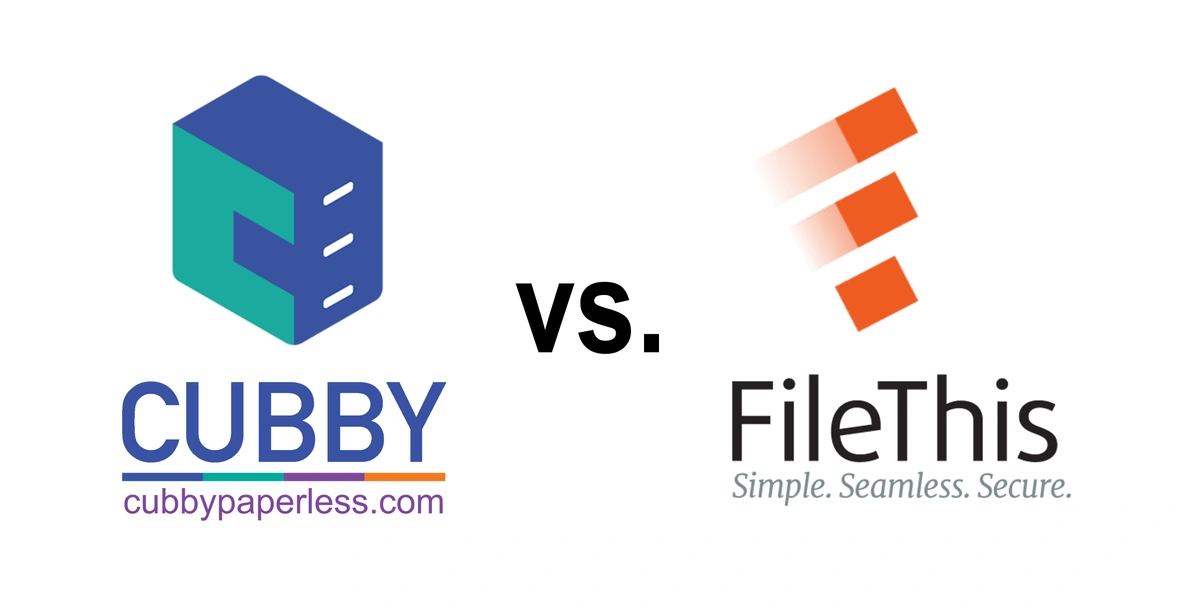Cubby Paperless vs. FileThis and Others

Cubby Paperless and FileThis have the same purpose:
- Aggregate paperless bills and statements from companies.
- Provide access for customers to their bills and statements with one login.
- Store those documents long after companies delete them from their servers.
At its peak, FileThis is reported to have had 100,000 users on its platform. In October 2023, FileThis was shut down. A former executive of FileThis gave two reasons why:
- FileThis had a difficult time scaling due to passing expenses on to the percentage of FileThis users willing to pay for the premium service.
- Due to the ever-changing cybersecurity landscape, companies were forced to make access increasingly complex, such as adding multi-factor authentication, making it evermore difficult for FileThis to successfully connect.
Cubby’s technology and business model avoids those two and other issues. The table below compares how Cubby and FileThis are different.
Note that references in this table to “20 login credentials” is referring to the credentials each customer has to access the 20 (or some other number) various websites of each of their 20 respective companies.
|
Feature |
Cubby |
FileThis |
|
How are documents transferred |
Push – Companies push documents to Cubby |
Pull – FileThis logs onto companies’ servers to pull documents |
|
20 login credentials |
Cubby does not have or use customers’ 20 login credentials |
Users give their 20 login credentials to FileThis, which it uses to login to the 20 companies’ websites. |
|
Authentication |
When documents are pushed to Cubby, each company is authenticated for access to Cubby. Cubby does not have access to companies’ systems. |
When FileThis accesses a company’s websites for, say, 1000 FileThis users, FileThis has to use 1000 different customer login credentials, some requiring multi-factor authentication |
|
Security of the 20 login credentials |
Since Cubby does have the 20 login credentials for each user, those credentials cannot be obtained from Cubby and maliciously used to login to those companies |
Since FileThis has to have the 20 login credentials to operate, there is a risk that its possession of those credentials could be compromised. |
|
Cost |
Companies pay for the Cubby service, just like they pay for paper, printing, and postage for the paper version, which means it’s free for customers |
FileThis had a freemium level, e.g., just a few documents retrieved, and a premium level, where users paid to have more documents retrieved each month |
Aside from FileThis, other companies have formed to solve the same or very similar problem. Most in this list focused on the payment of bills, whereas Cubby and FileThis focused on consolidating and archiving the paperless bills and statements.
- Check (formerly Pageonce) – Pay bills. Became Mint Bills, then shut down in 2018.
- Doxo – Pay bills. Not aggregating paperless bills and statements.
- Enfold – Digital lockers for companies to use for their customers. Still separate login for each company.
- Finovera – Used by banks to allow their customers to pay bills on the banks’ website. Aggregates and stores bills.
- Intuit Paytrust – Pay bills. User uploads documents.
- Manilla – Aggregate bills. Shut down in 2014.
- Mint – Track and manage expenses. Shut down in 2024.
- Mobilligy – Pay bills. Appears to have shut down around 2014.
- MoneyStream – Pay bills. Appears to have shut down around 2020.
- MyCheckFree – Pay bills. Shut down in 2024.
- Zumbox – Digital mailbox. Shut down in 2014.
Many in this list focus on bill payments, not on aggregating and storing bills and statements. They also don’t aggregate statements for which there is no bill due, such as a checking account statement, an explanation of benefits from an insurance company, or a paystub.
While users can pay bills through Cubby, they do so by clicking on a link which takes them to the company’s payment portal.
The Cubby Paperless push technology avoids much of the problems FileThis and other companies encountered when attempting to retrieve bills and statements.
Join the Cubby Community to show companies you want Cubby.
Category: Post
Press Release: Cubby Paperless Announces New White Paper on Improving Experiences with Paperless Bills and Statements
Entice Your Customers to Check eBills and Statements
Next >